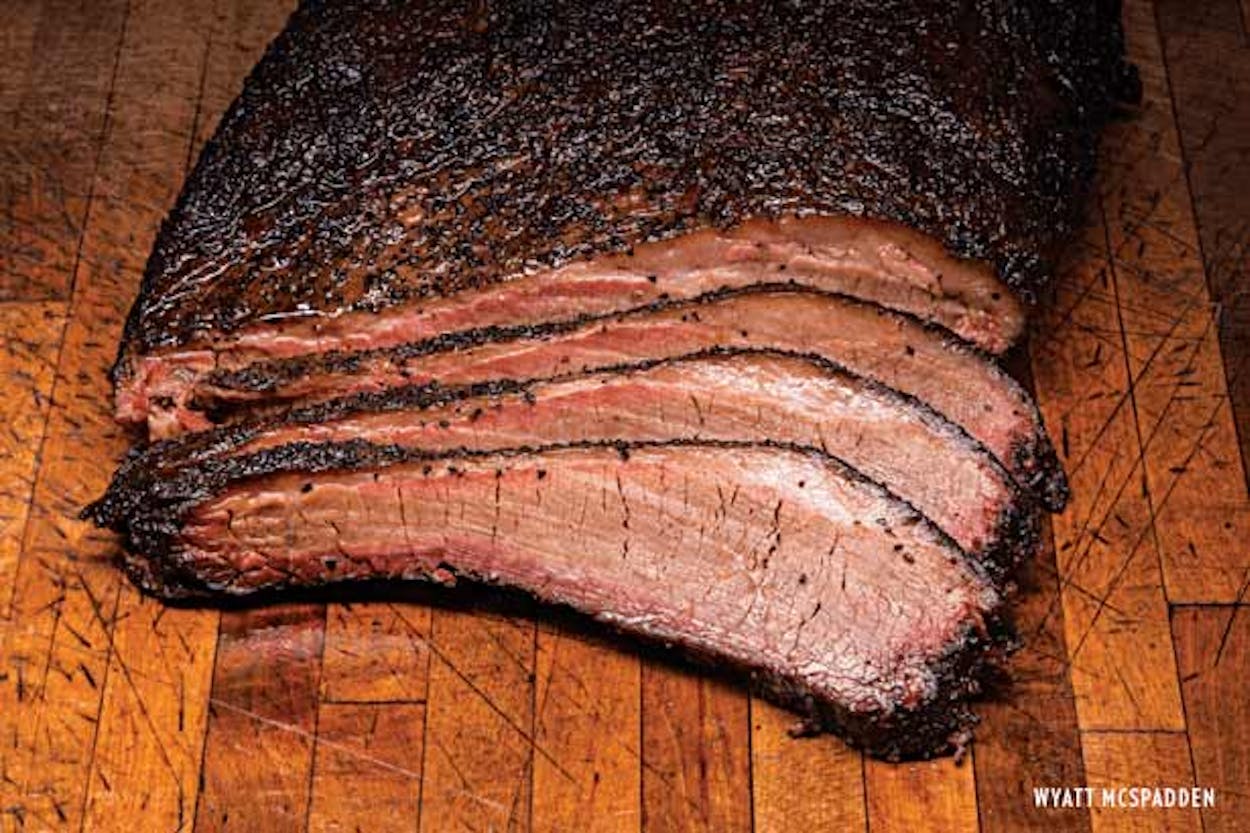IN OTHER PARTS OF the country, the goal of barbecue is to make something delicious in a reasonable amount of time with the greatest chance of success. In those places the pig is the chosen animal. We Texans cook pig ourselves, having found that spareribs make an excellent hors d’oeuvre, but let’s be candid: anybody with half a brain can cook pork. The meat is juicy and soft, and in many Southern barbecue joints, the finished product is hacked to pieces and slathered with sauce. Just to be safe, they’ll often pile some slaw on top, stick the mess inside a bun, and serve it with more sauce. The result is a pleasant enough starter dish for a child or remorseful vegetarian, but it does not represent a serious challenge. A dish towel could be made palatable with such treatment. Texans, a frontier people never known for doing things the easy way, have
chosen a different path, one that requires years of practice to master. In Texas, we cook beef brisket.
What makes brisket so difficult to do right? Let’s start with basic anatomy. The brisket is the area of muscle between the front legs of a steer or cow. Each animal has two briskets, the left and the right, and they are full of tough connective tissues. Only slow, tedious cooking at a narrow and unforgiving temperature range will break down this tissue, which is why the best Texas pitmasters start their workday somewhere around two or three in the morning.
But it gets worse. Within each brisket are two completely different muscles. The first, near the rib cage, is big, thick, and well marbled. The public calls this “fatty” brisket and pitmasters call it “the point.” The second is thinner, longer, and more scantily marbled. Customers know it as “lean” brisket and butchers refer to it as “the flat.” Smoked by an inexperienced cook, a brisket’s flat will be done while its point is still mooing, but by the time the point is finished, the flat is as dry as a creek bed.
The final challenge comes at the end. First off, the muscle fibers in the point and flat run in different directions, so if you cut a whole brisket at the same angle, half the slices will be tender while the other half will be as stringy as your mother’s pot roast. And now for the sadistic part: while other styles of barbecue hide mistakes with sauce, a proper Central Texas smoked brisket is placed before the customer unadorned.
Brisket, in other words, is not for the faint of heart. Which is why we love it so much. When it’s done right (as at Franklin Barbecue, pictured), the result is an ebony-crusted, gloriously smoked, scandalously fatty piece of heaven, the enjoyment of which derives not only from the deliciousness of the meat but also from an understanding of the profound devotion and hard-won knowledge required to bring it forth.
(This story originally appeared in the June 2013 issue of Texas Monthly.)






